Templates and User Guide for Manually Encrypting Cryptocurrency Seed Phrases Using an Alpha-Numeric Keypad and a 4-Digit Code
Background
In the field of cryptocurrency, securely storing private key seed phrases is critical to protecting one’s digital assets. One way in which phrases can be securely stored is by manually writing the phrase on paper (or in an electronic document). This specific method of storing phrases is vulnerable to unauthorized access. Unauthorized individuals can use the phrase, if discovered, to steal cryptocurrency funds. The following manual encryption method attempts to address this vulnerability using an alphanumeric keypad and a 4-digit code to obscure the seed phrase among decoy words.
Purpose
To securely store cryptocurrency seed phrases by manually encrypting them using an alphanumeric keypad and a 4-digit code.
Important Security Notices
This is not a private key/seed phrase generator. This method does not protect against brute force computer decryption. The following templates offer just 10,000 possible combinations, which equates to about 213. For a method to be secure against brute force attacks, a far greater number of combinations is required—typically 2128 or more. Please be mindful of this when using this method.
What You Need
It is recommended that users reference the BIP-39 word list and a word list randomizer to generate decoy words.
Process Overview
- Select a 4-digit code (digits can be repeated up to 4 times).
- Divide your seed phrase into 4 equal parts.
- Map each part of the seed phrase to a specific section on the numeric keypad using your 4- digit code.
- Fill sections of the keypad that are not mapped to your seed phrase with decoy words.
User Guide (Applies to 12, 16, 24 word seed phrases)
-
Step 1: Determine Your 4-Digit Code
User chooses their numeric 4-digit code. Digits can be repeated up to 4 times by using the 4 alphabetic subsections within a given digit. The code will be used to determine the organization of your seed phrase.
Example Code: 5273
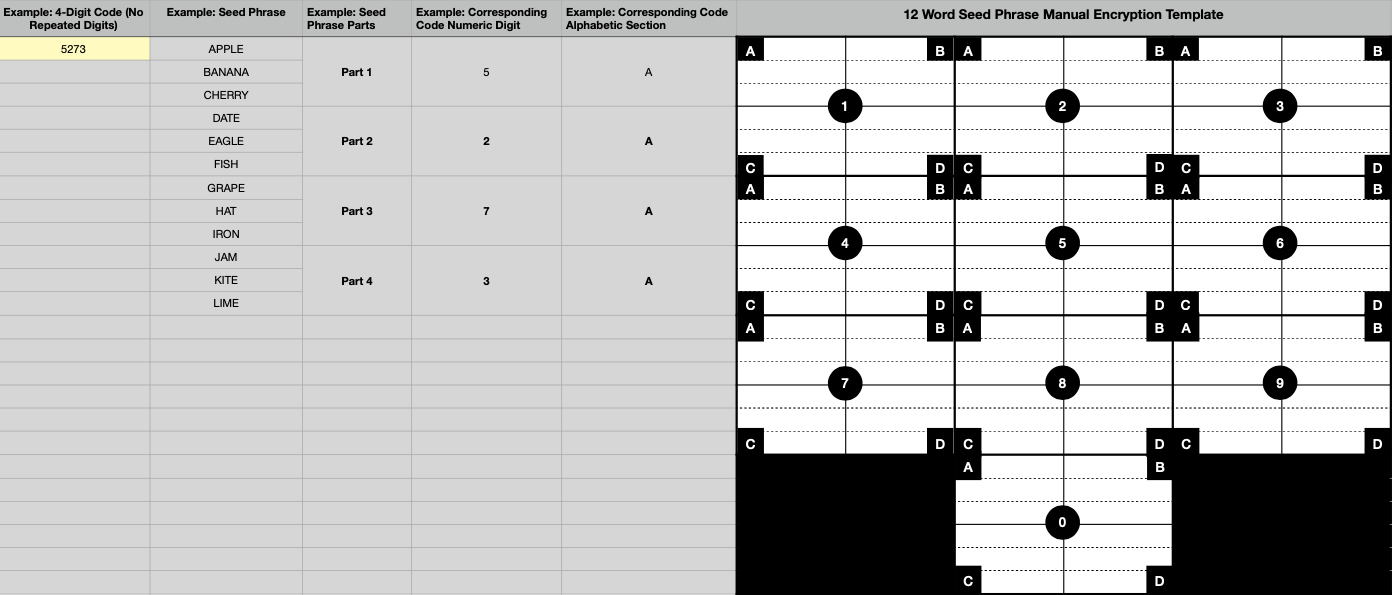
Example Code (w/ Repeated Digits): 1223
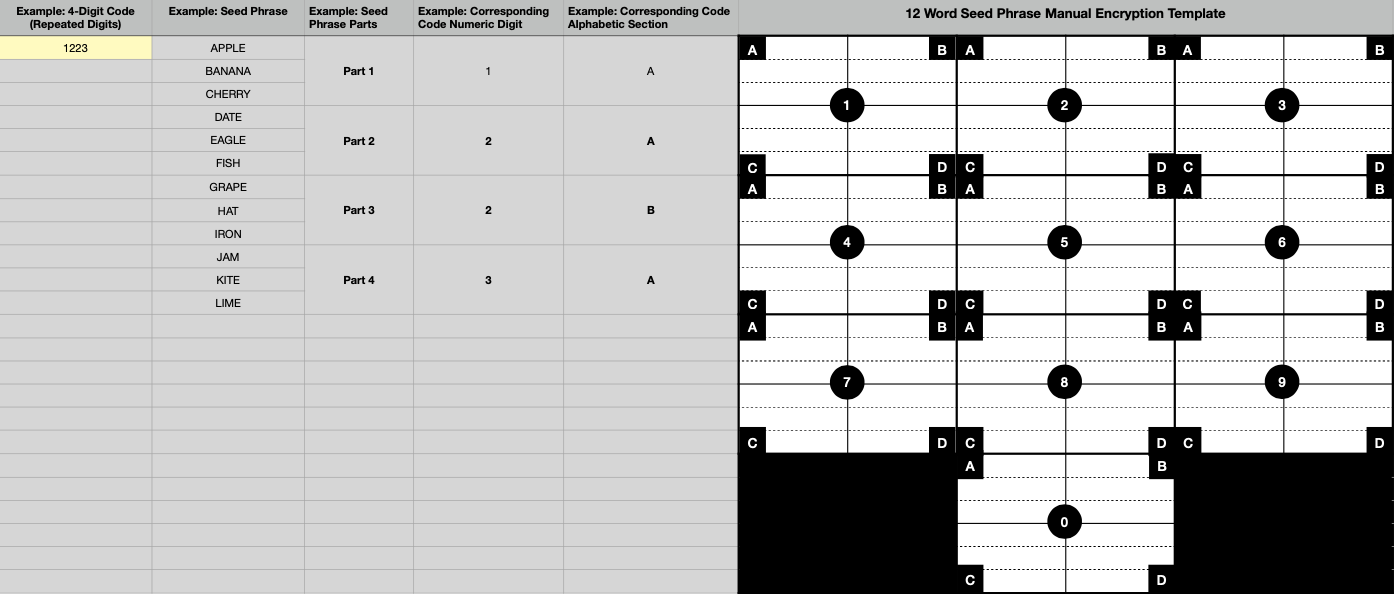
-
Step 2: Divide Your Seed Phrase
Divide your 12-word seed phrase into 4 sequential parts, each containing 3 words in the original order of the seed phrase.
Example Seed Phrase Parts:
Section 1: apple banana cherrySection 2: date eagle fishSection 3: grape hat ironSection 4: jam kite lime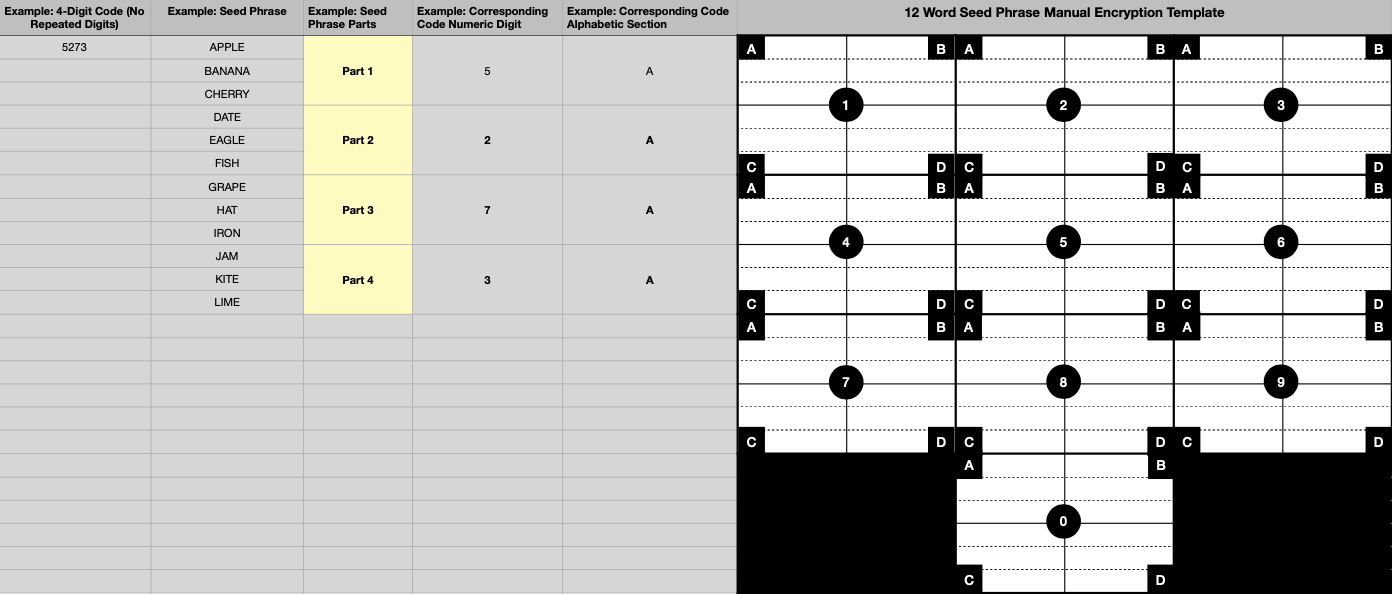
-
Step 3: Assign Seed Phrase Parts to the Code
Each of the 4 seed phrase parts corresponds with an alphanumeric section in your 4-digit keypad. Each digit has 4 alphabetically sequential sub-sections (A, B, C, D), allowing digits in the 4-digit code to be repeated up to 4 times. The first time that a digit is used in the 4-digit code populate subsection ‘A’; the second time that a digit is used in the 4-digit code populate subsection ‘B’; and, so on and so forth for sub-sections ‘C’ and ‘D’.
Example with Code 5273:
5A: apple banana cherry2A: date eagle fish7A: grape hat iron3A: jam kite lime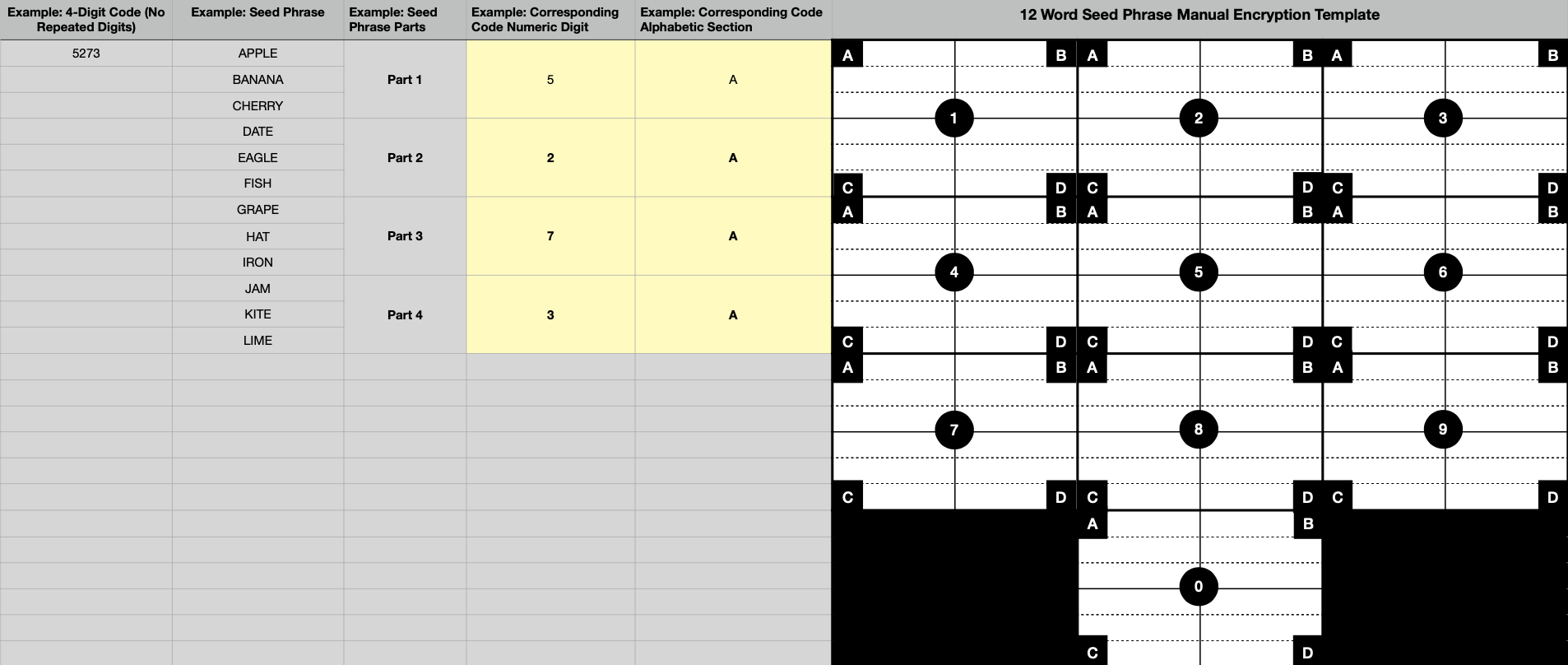
Example with Code 1223 (Repeated Digits):
1A: apple banana cherry2A: date eagle fish2B: grape hat iron3A: jam kite lime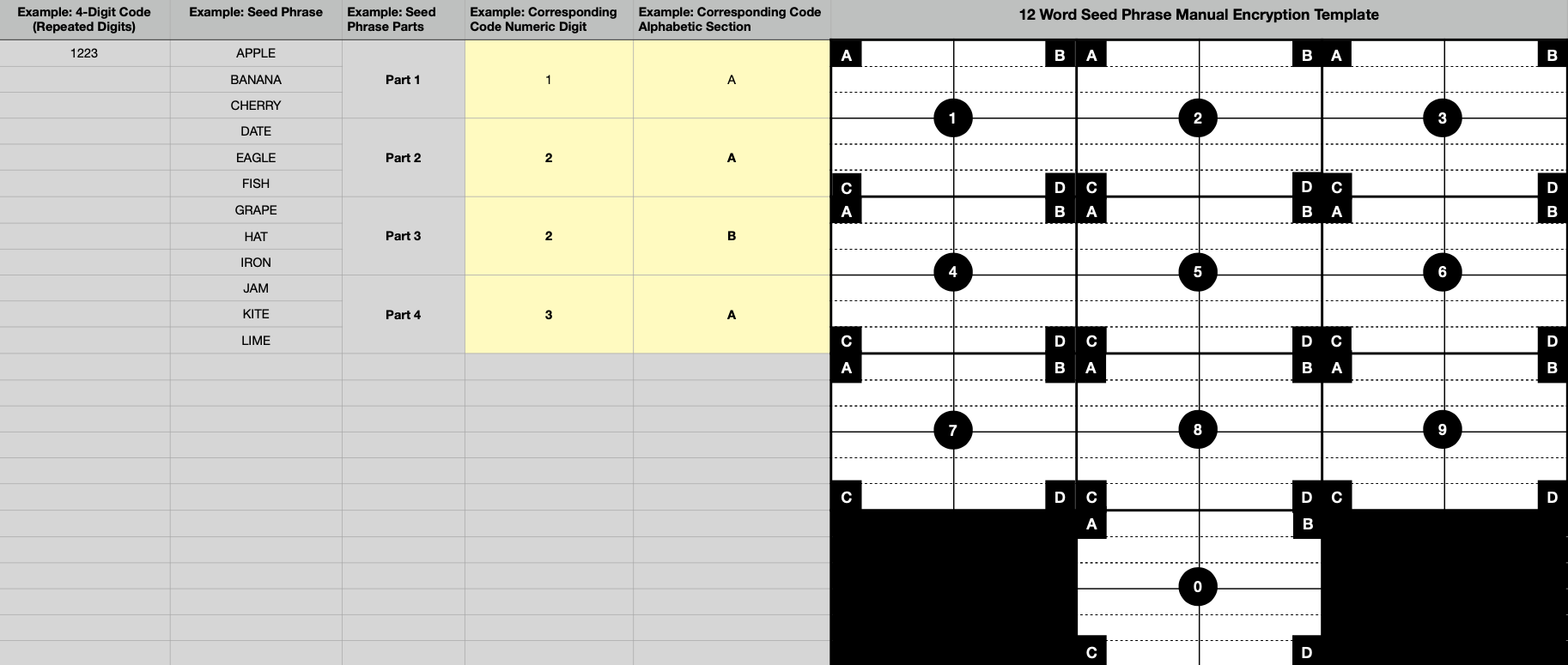
-
Step 4: Populate the Manual Encryption Template with Seed Phrase
Populate each alphanumeric section of the manual encryption template with its corresponding seed phrase part.
Example with Code 5273:
5A: apple banana cherry2A: date eagle fish7A: grape hat iron3A: jam kite lime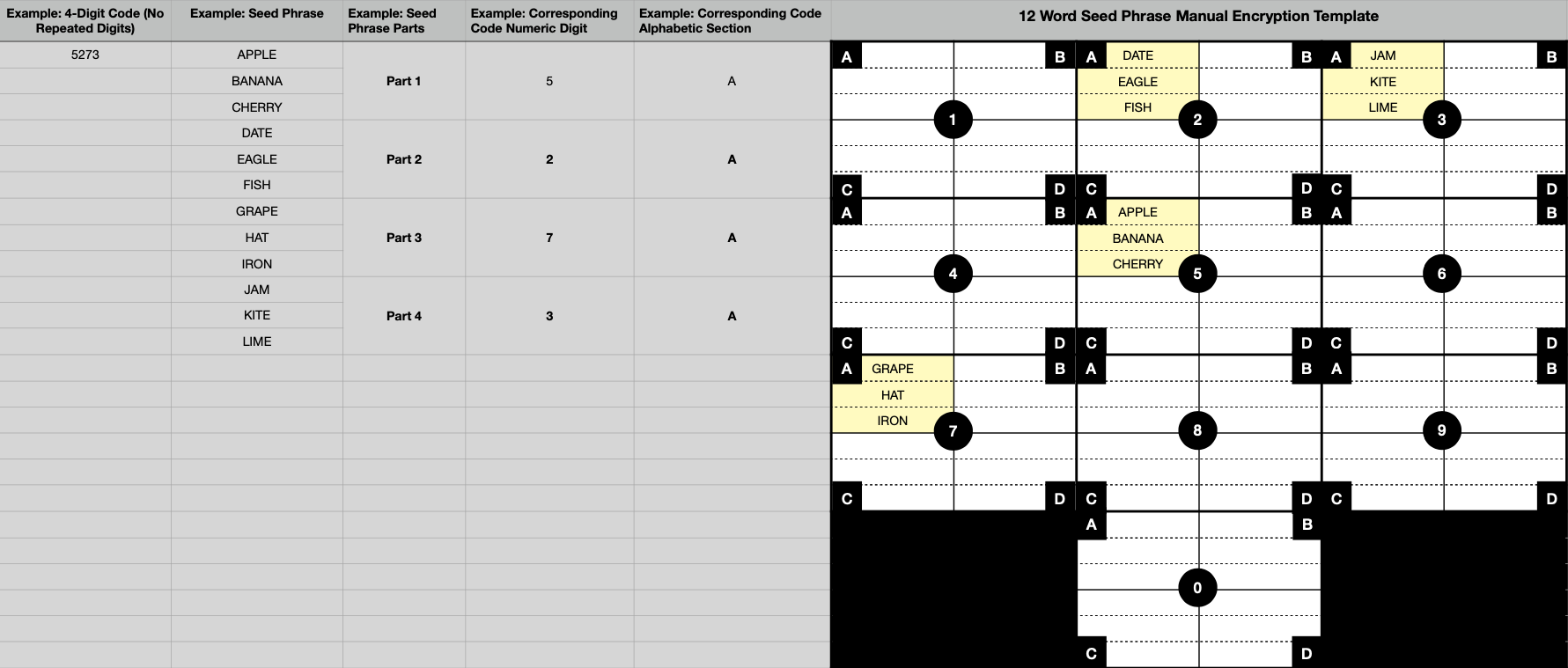
Example with Code 1223 (Repeated Digits):
1A: apple banana cherry2A: date eagle fish2B: grape hat iron3A: jam kite lime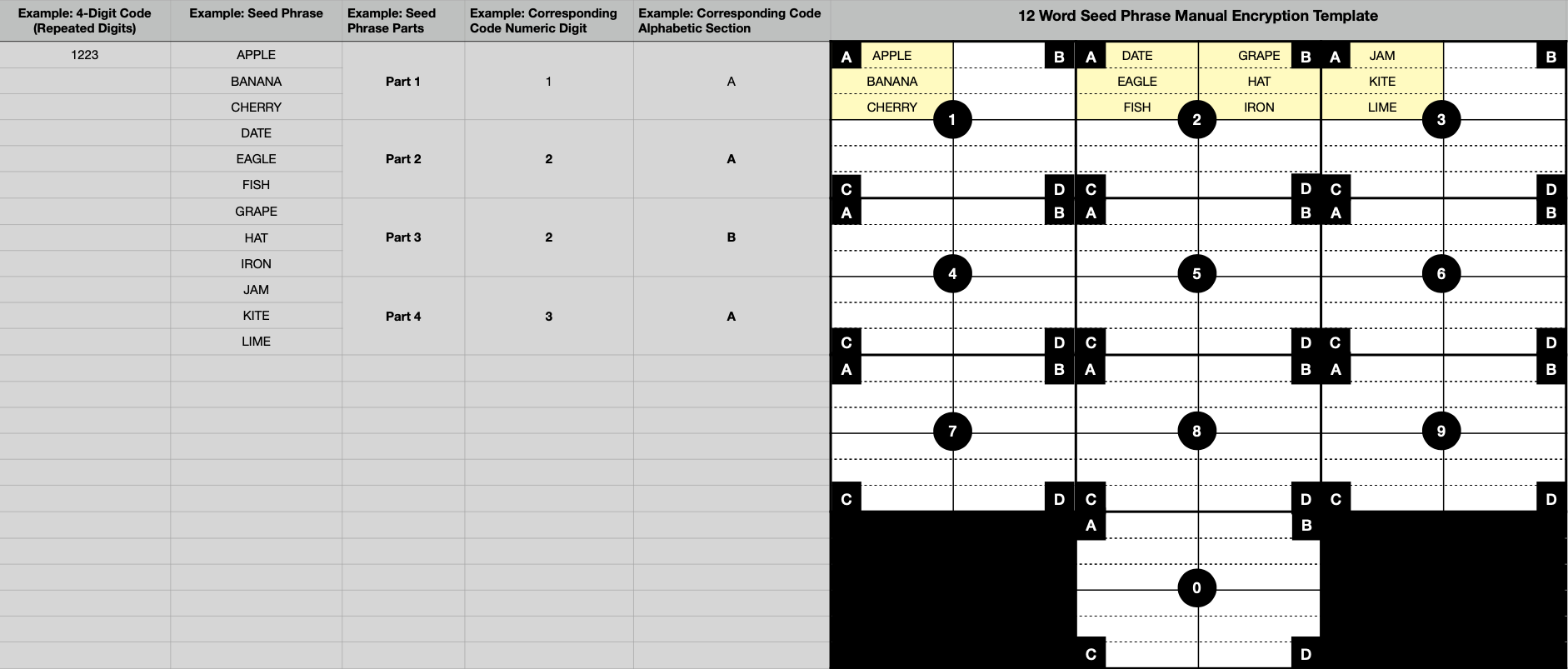
-
Step 5: Populate the Manual Encryption Template with Decoy Words
Populate each alphanumeric section of the manual encryption template that is not a part of the 4-digit code with decoy words (108 decoy words needed to fill in remaining sections). Decoy words should be selected from the BIP39 word list — the list from which all seed phrase words originate.
Example Decoys:
5B: water cloud bird2C: mountain river tree7B: stone sand leaf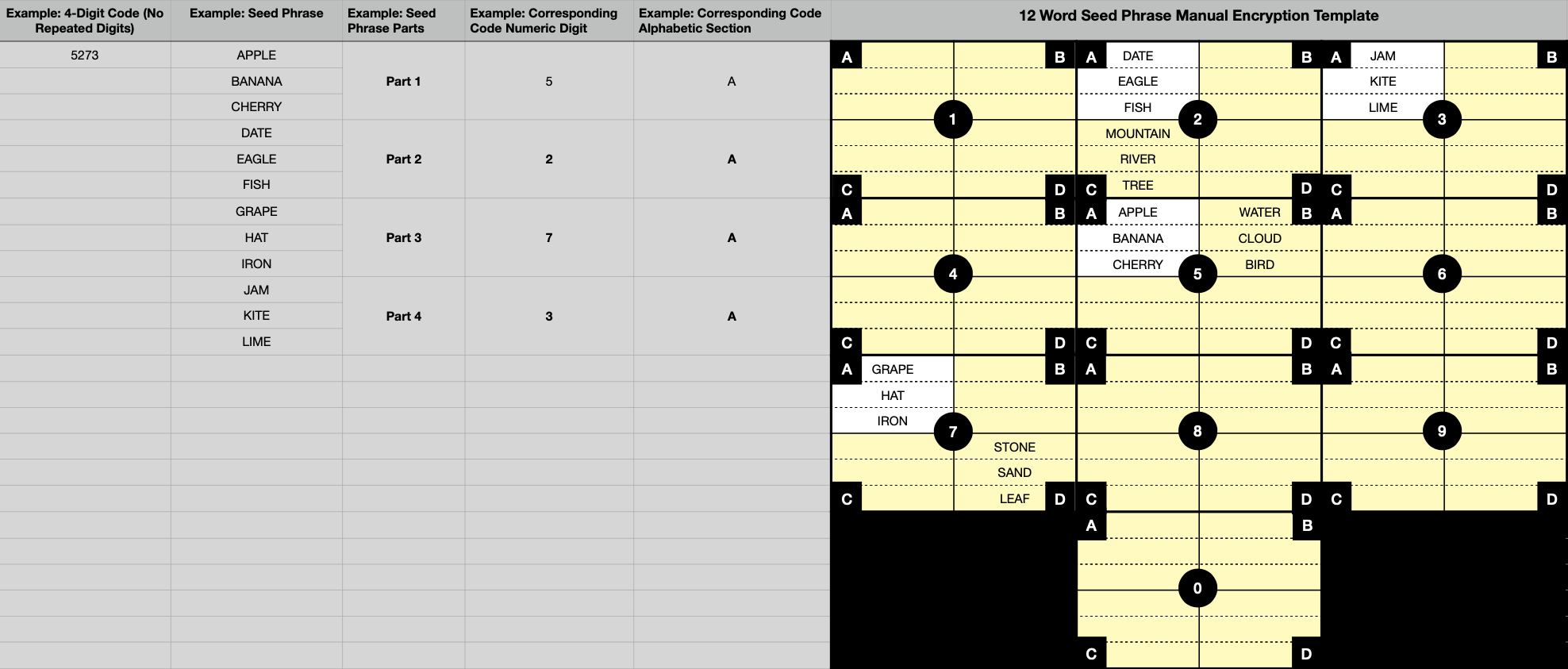
Prerequisite:
User already has a 12-word cryptocurrency private key seed phrase that was generated using a cryptocurrency private key seed phrase generator (e.g., a cryptocurrency wallet like Coinbase Wallet).Example Seed Phrase:
apple banana cherry date eagle fish grape hat iron jam kite lime
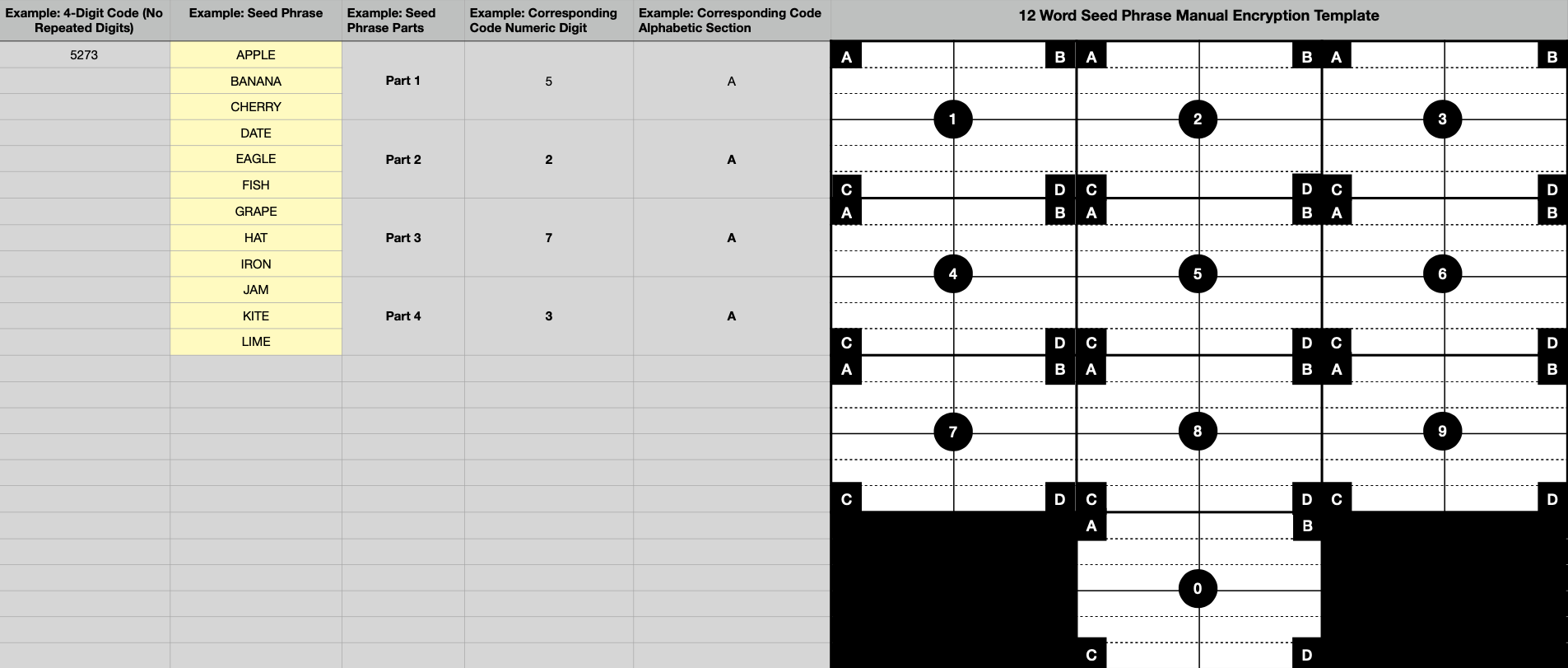
More Than 12 Words in Seed Phrase
In addition to being used for 12-word seed phrases, this method can be applied to 16 and 24 word seed phrases simply by adding lines to the alphabetic subsections of the template.
Example: Lines per alphabetic subsection needed for 12, 16, and 24 word seed phrases
12 word: 3 lines, 4-digit code
16 word: 4 lines, 4-digit code
24 word: 6 lines, 4-digit code